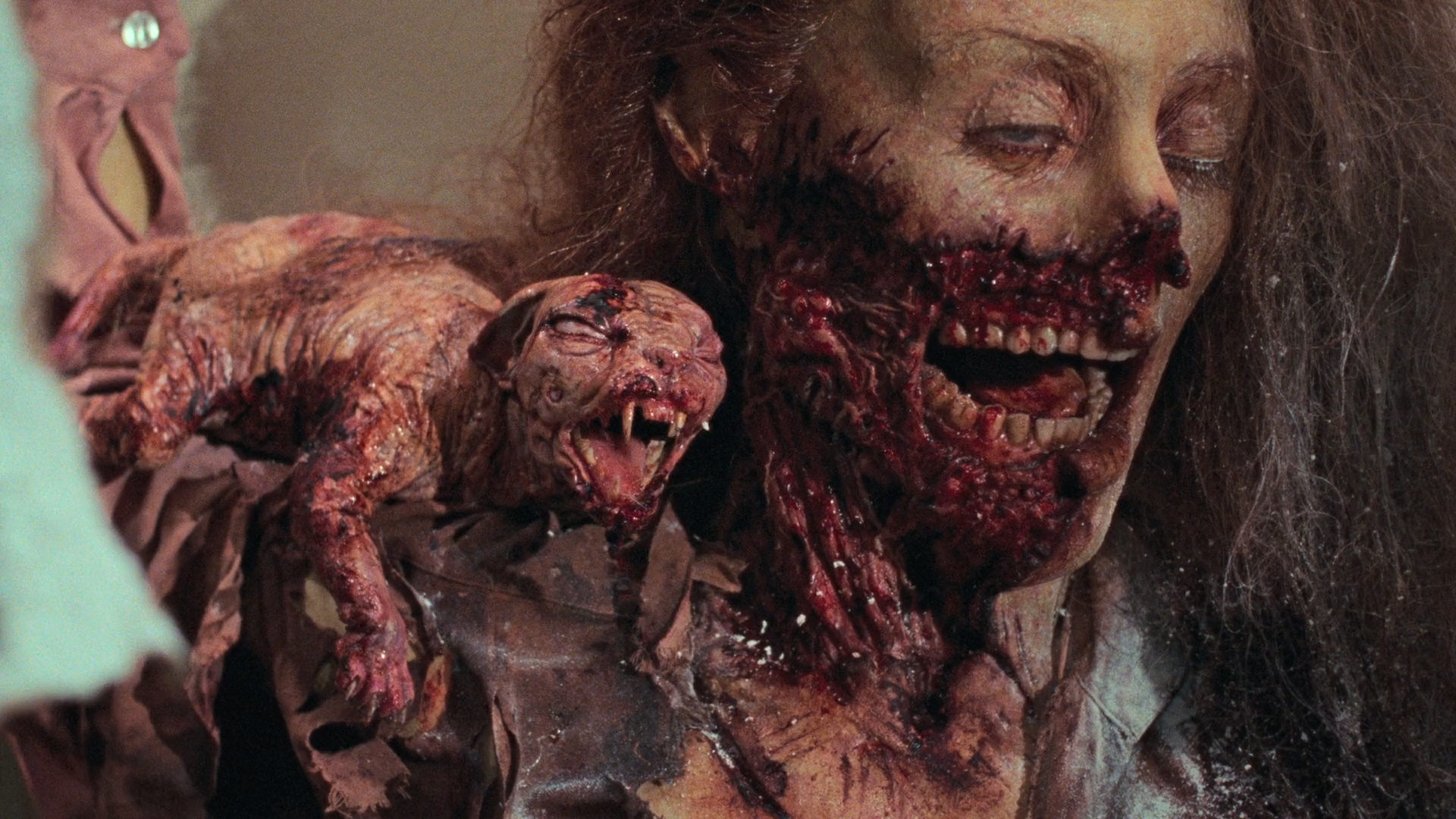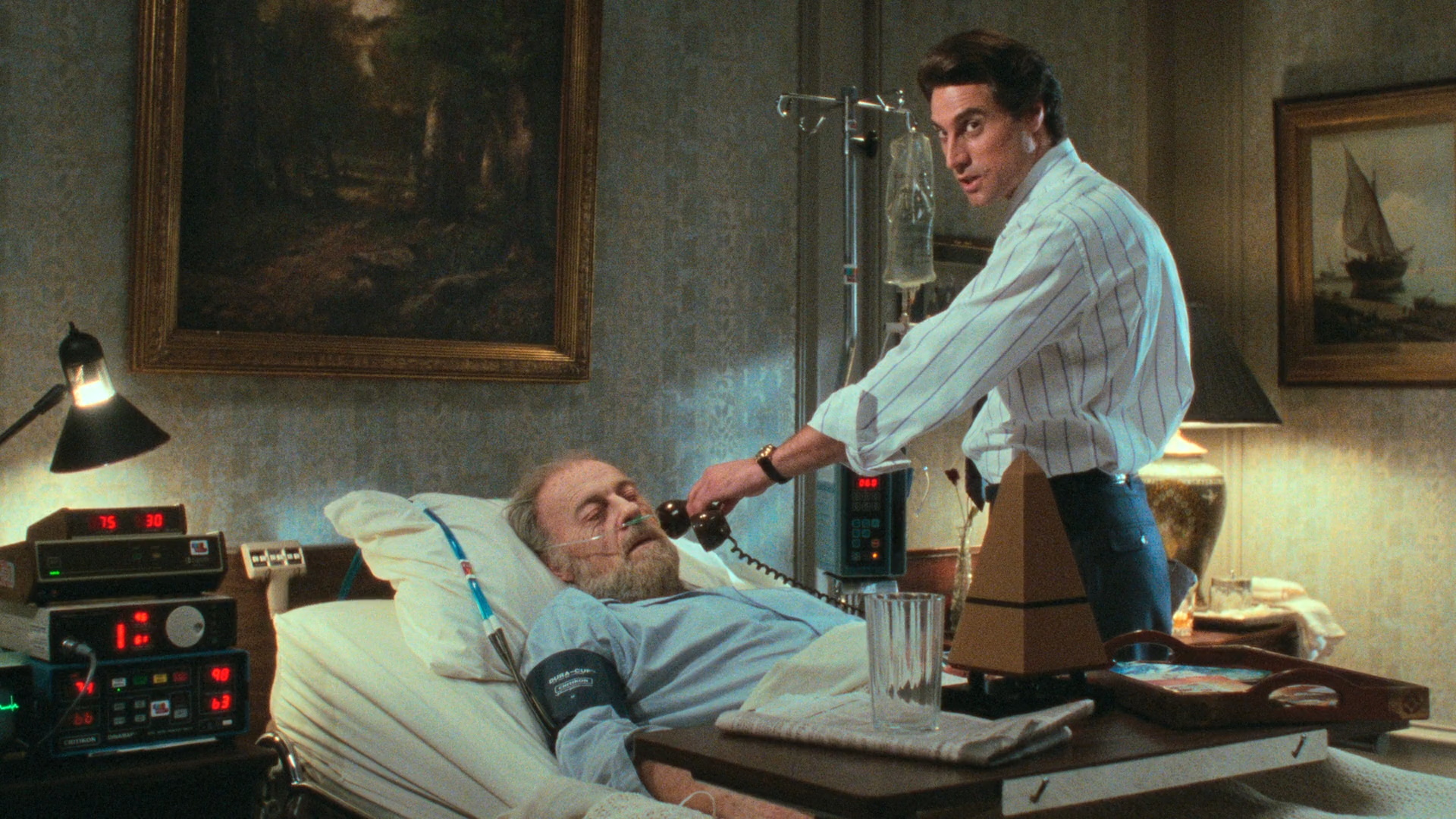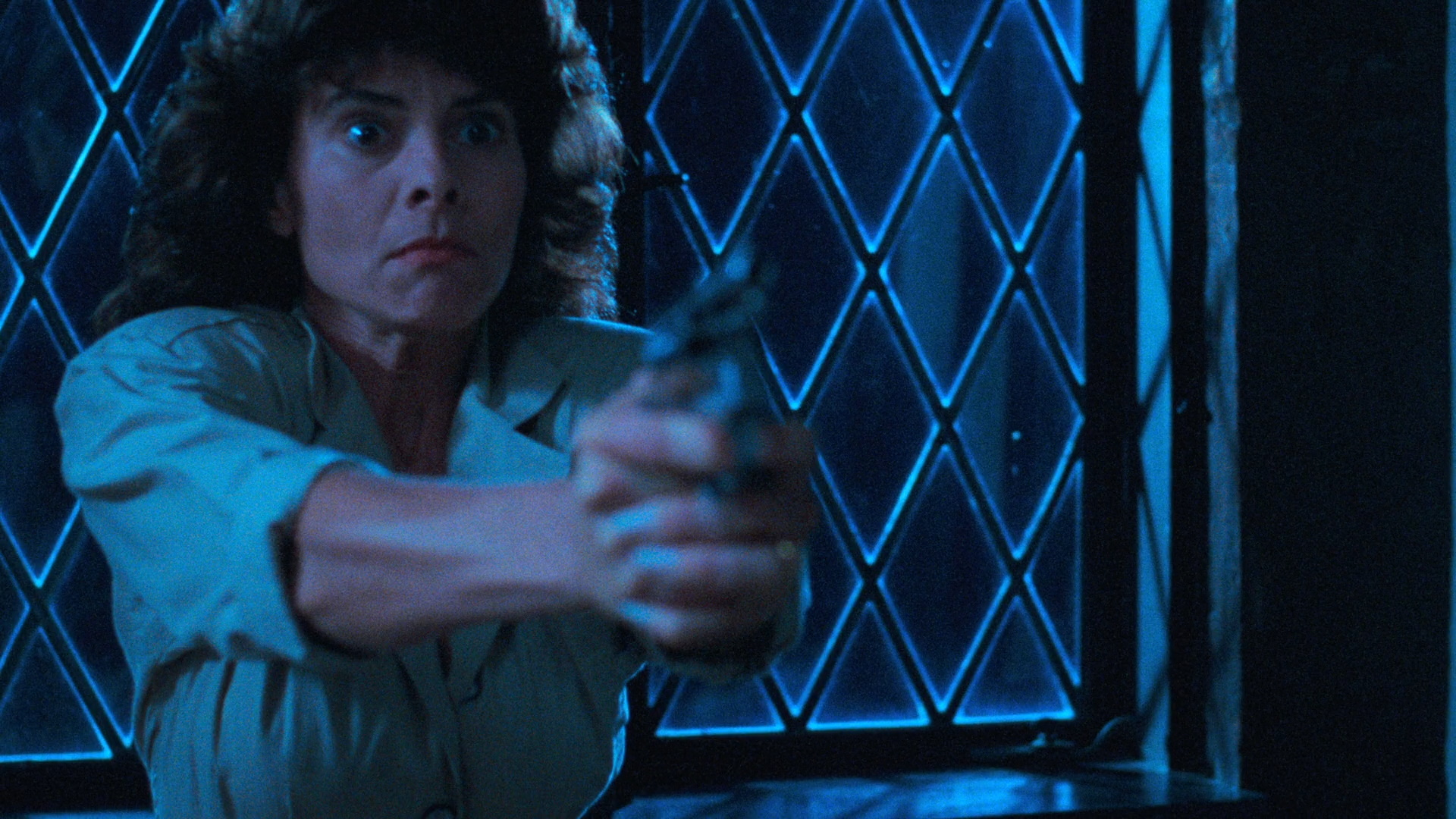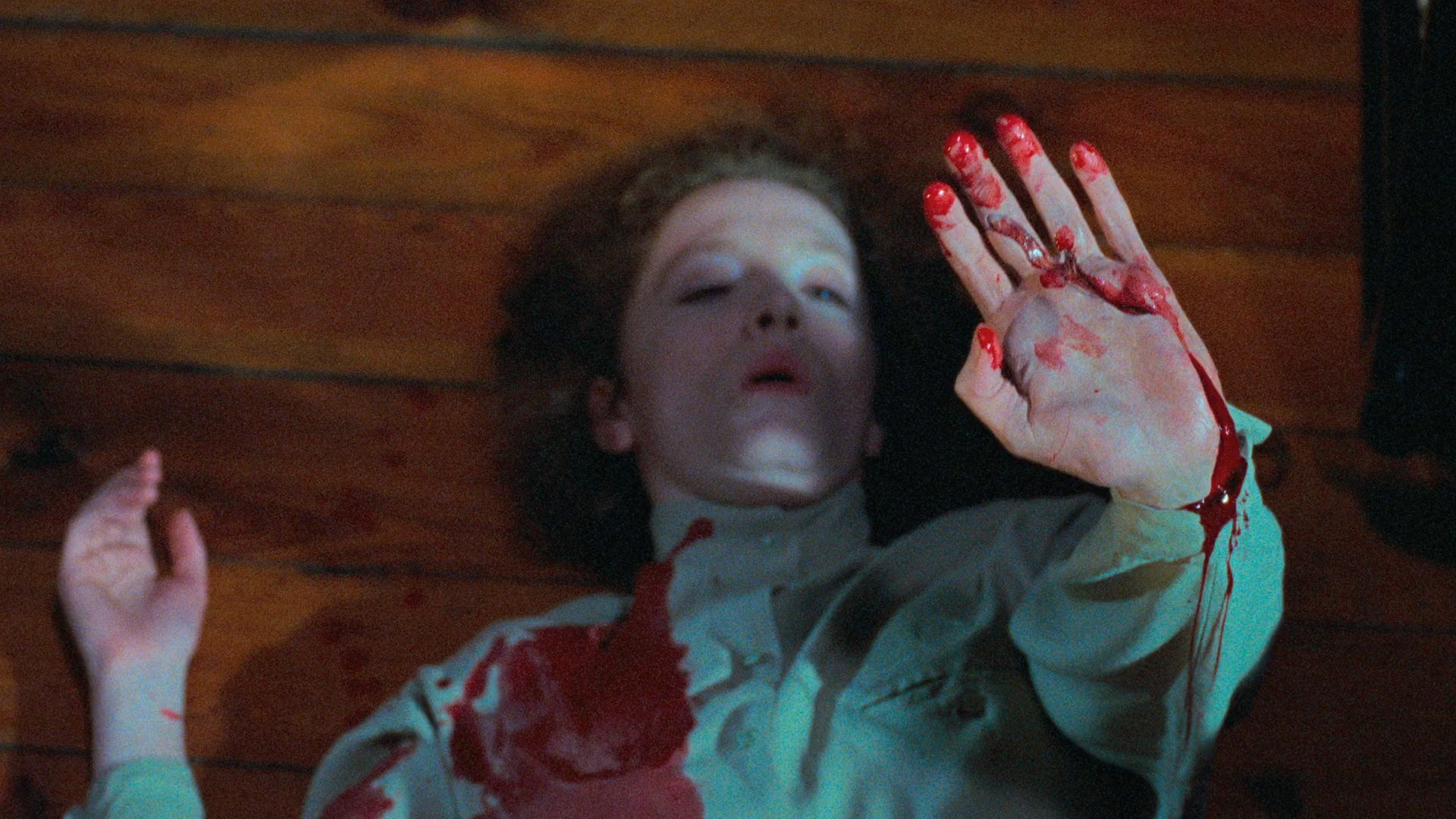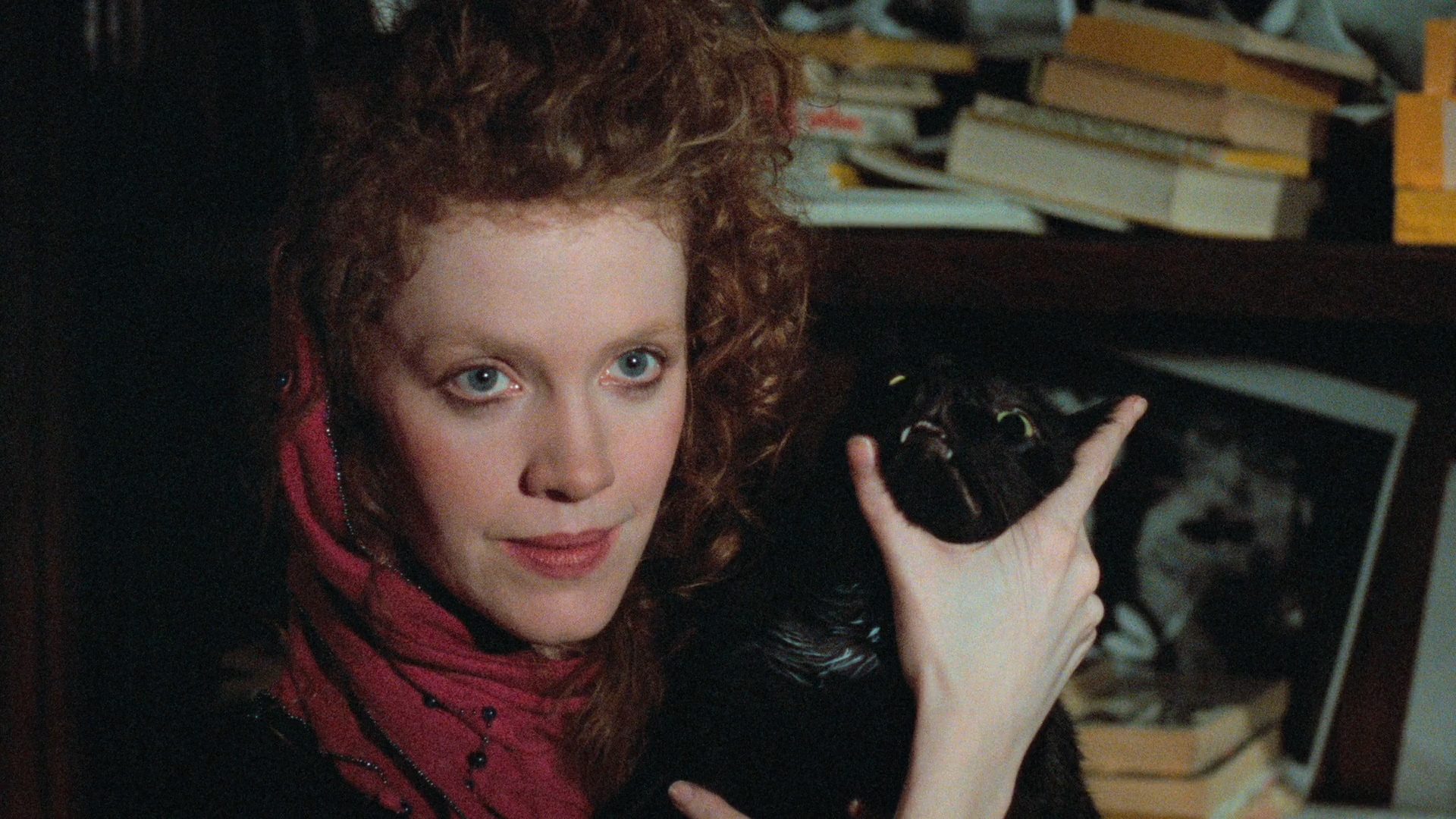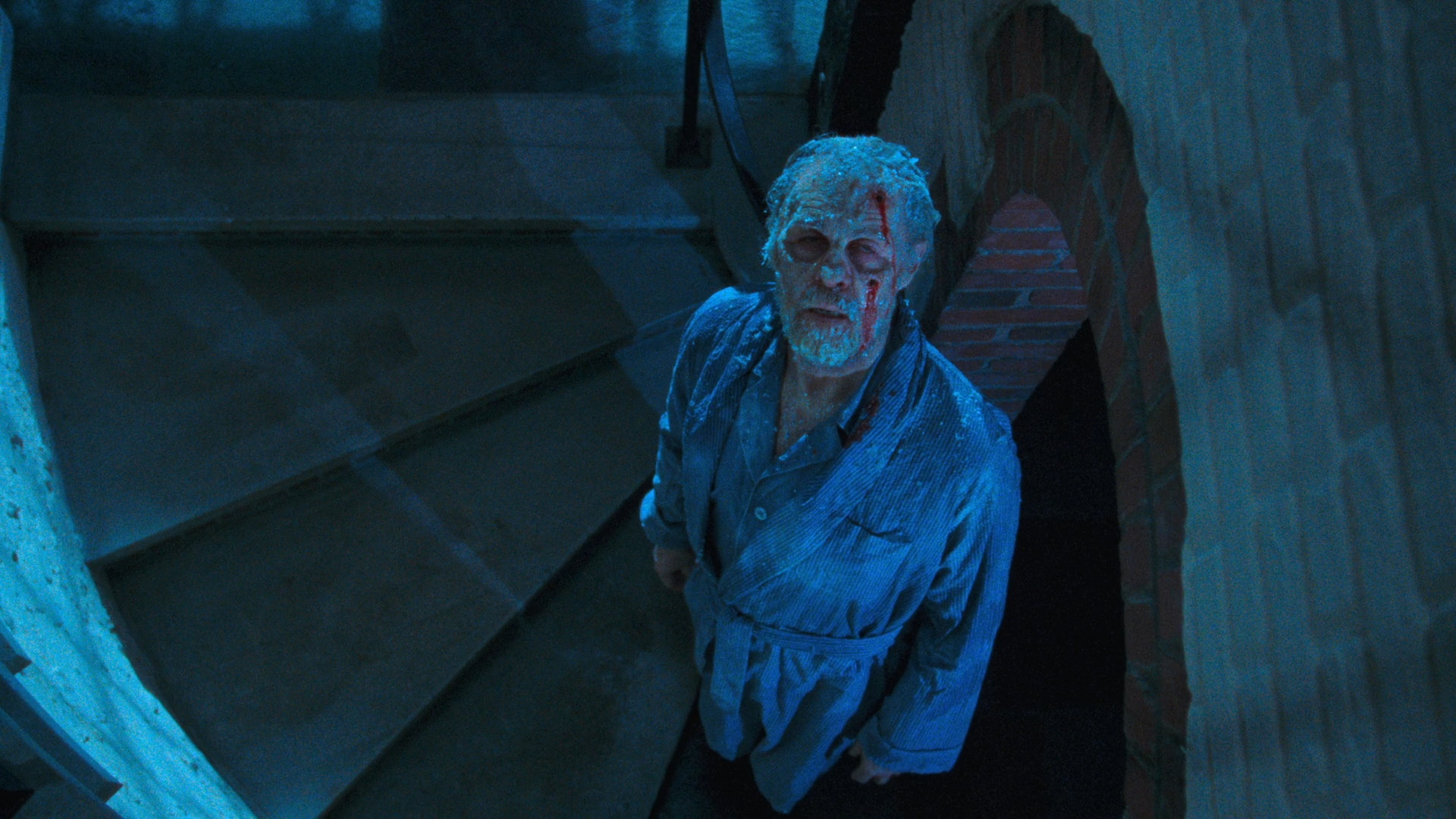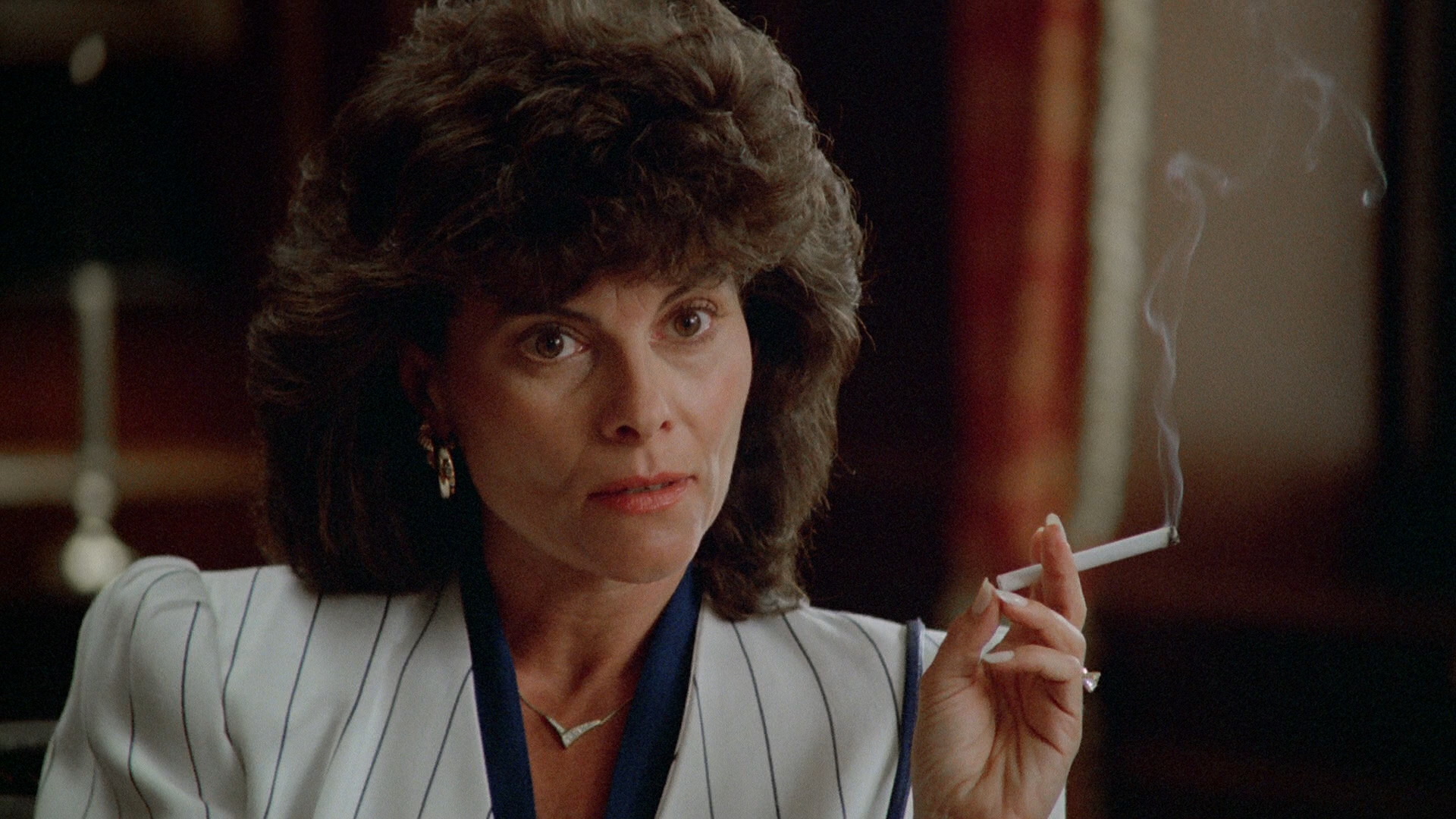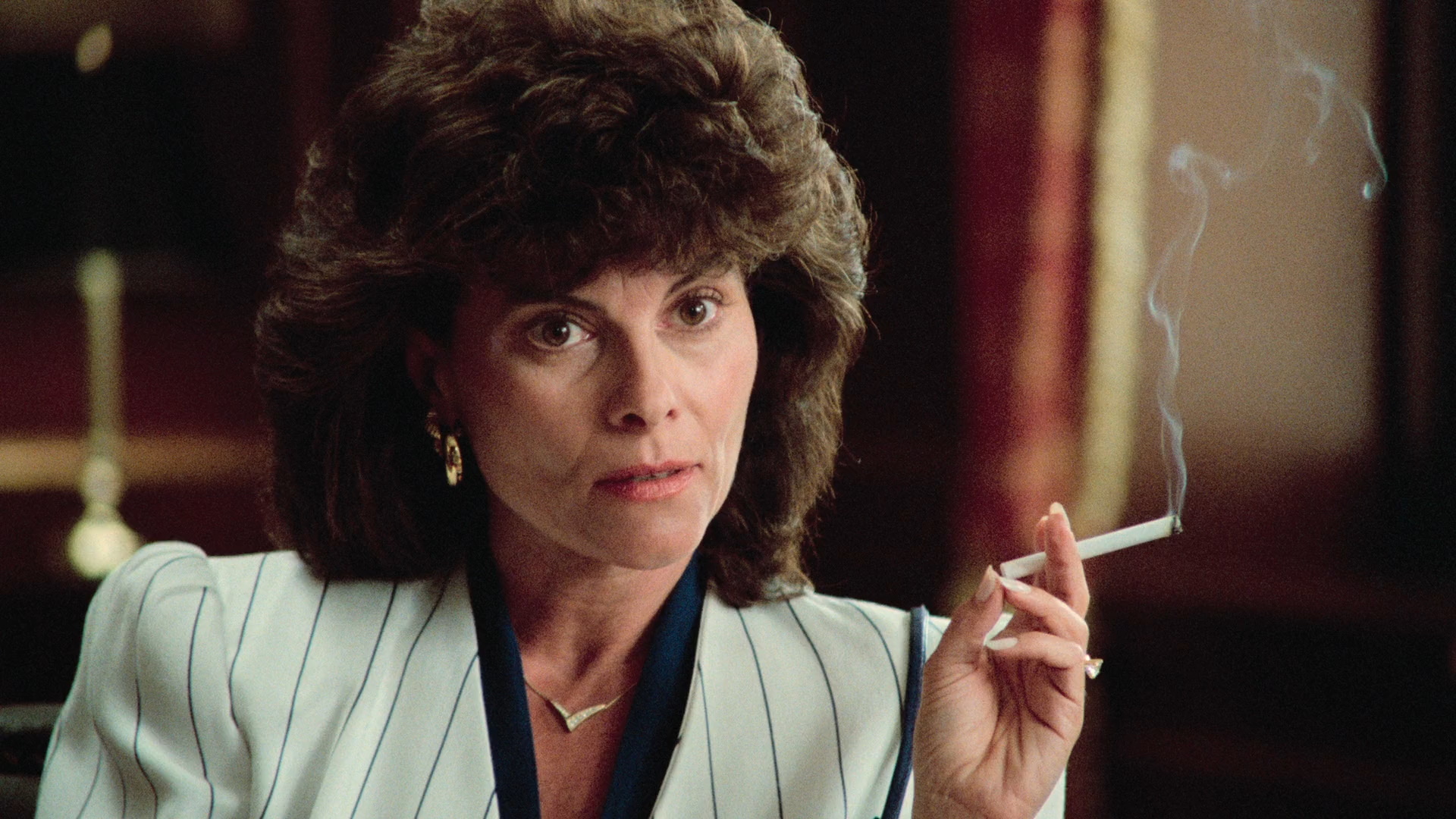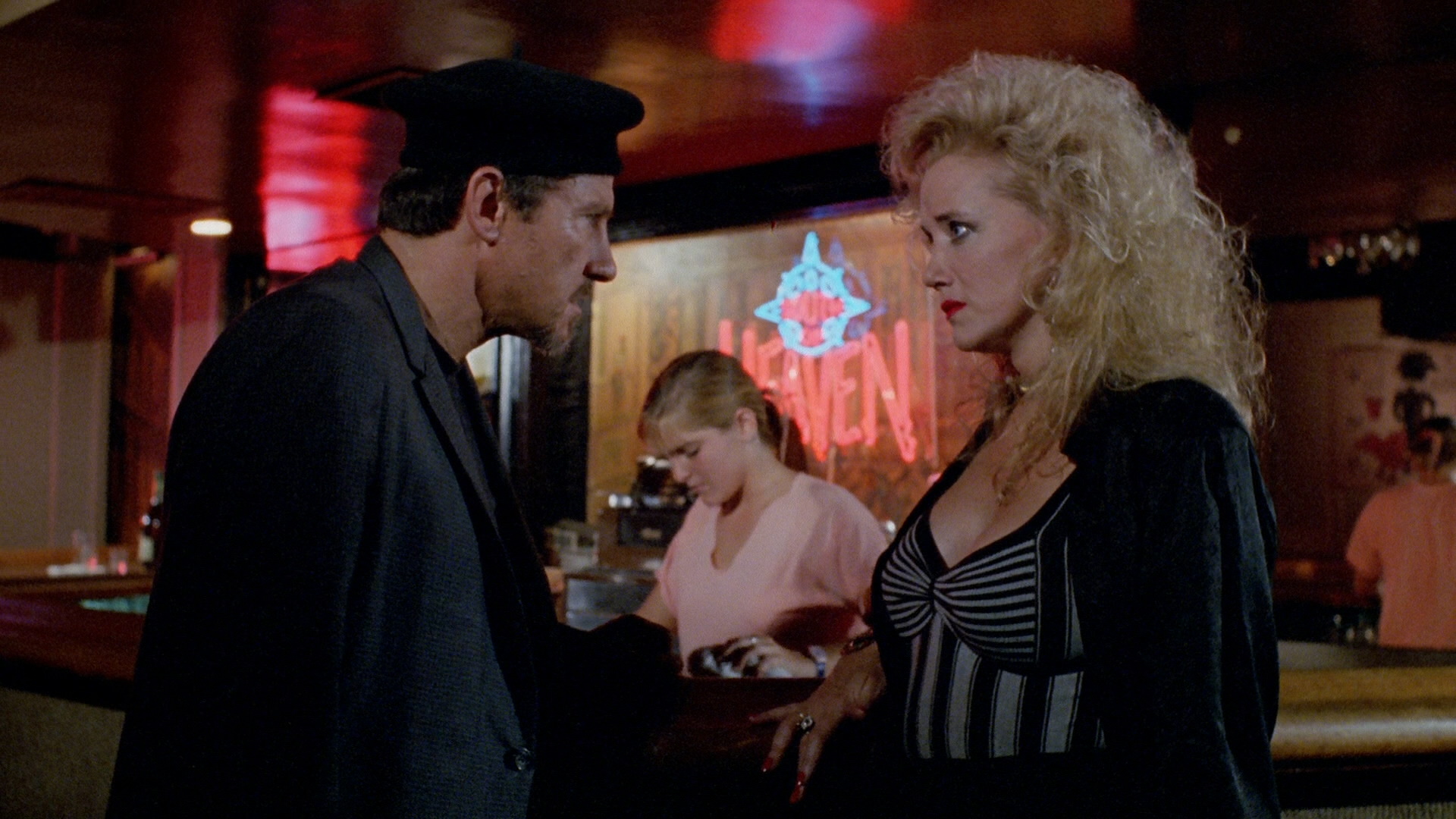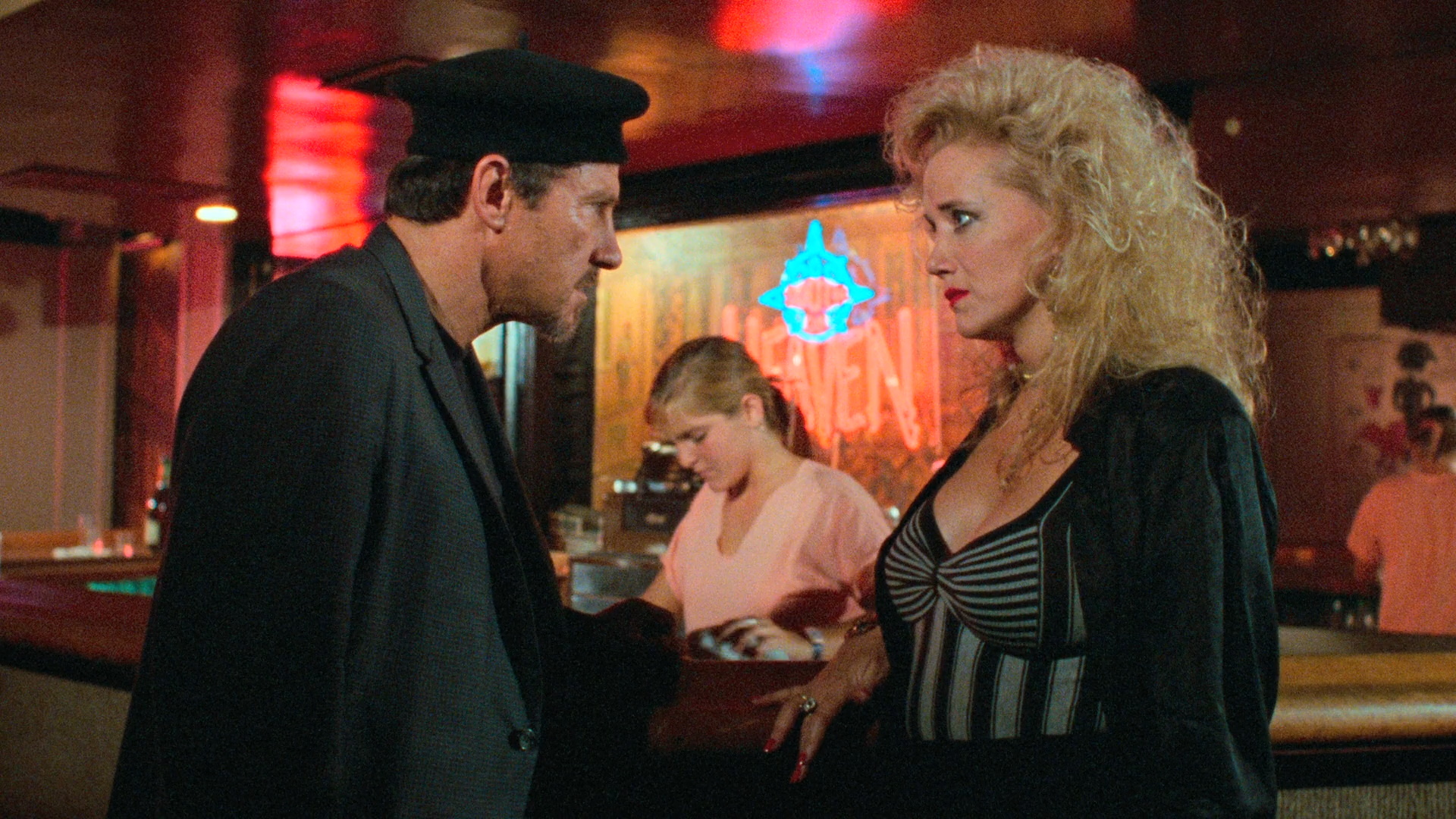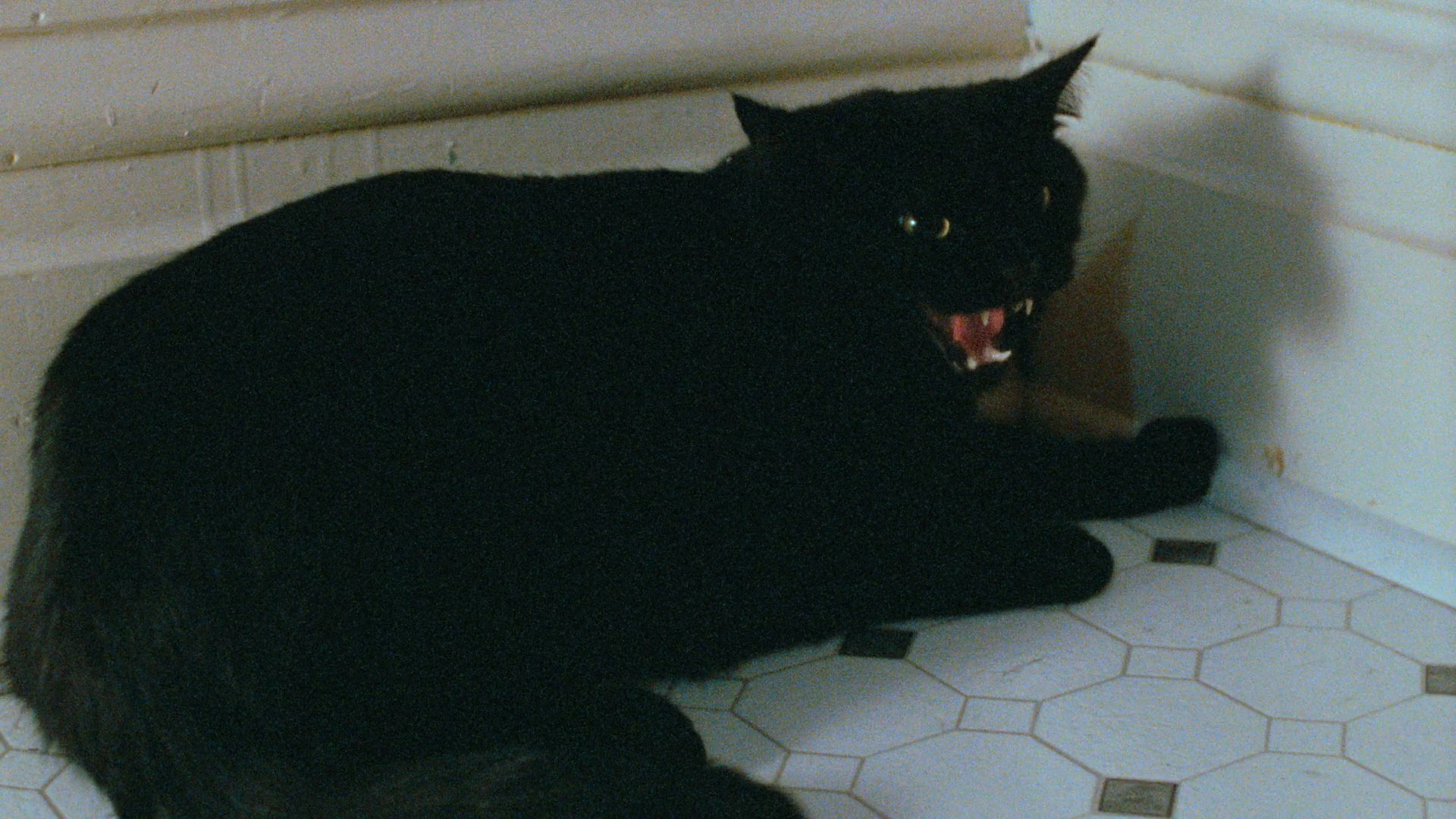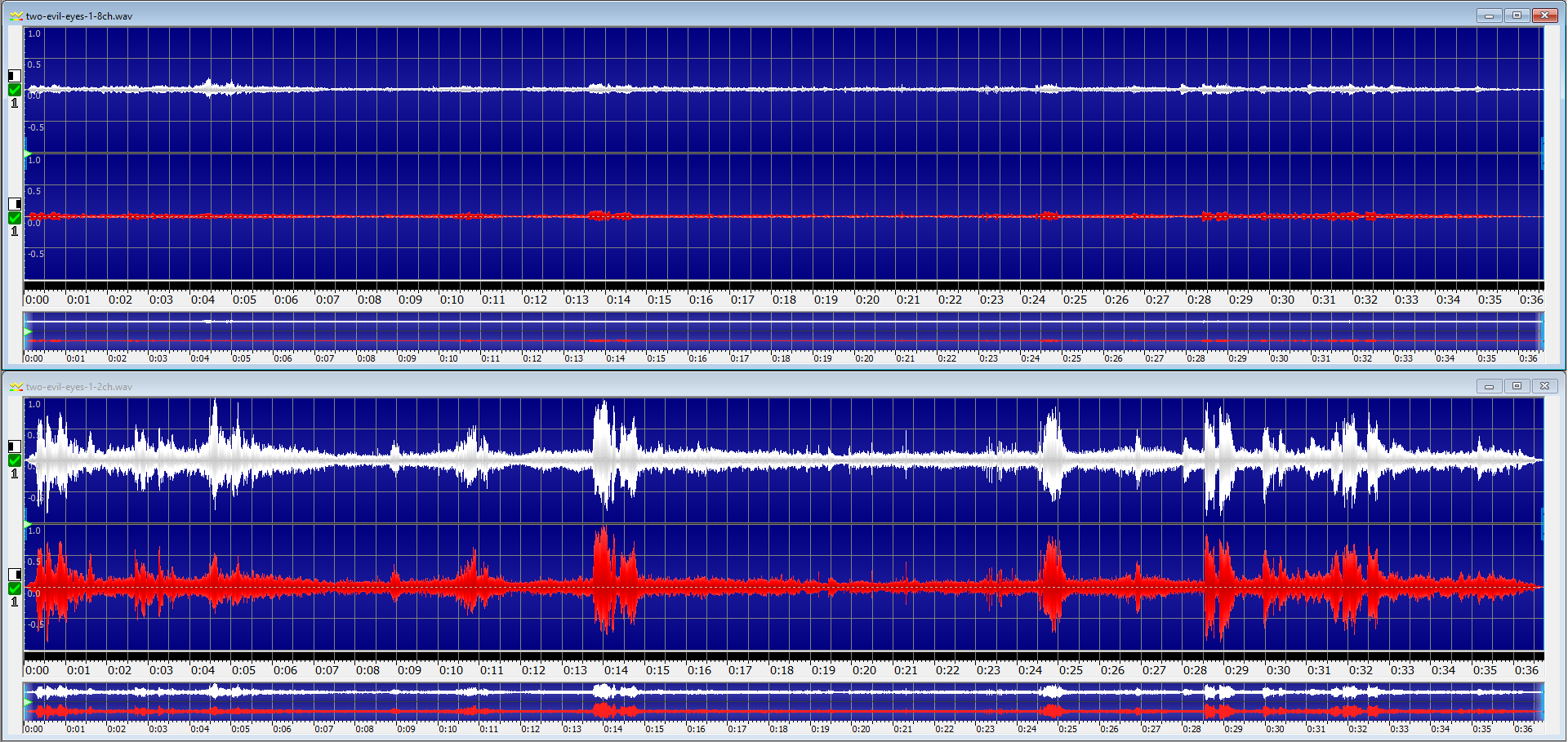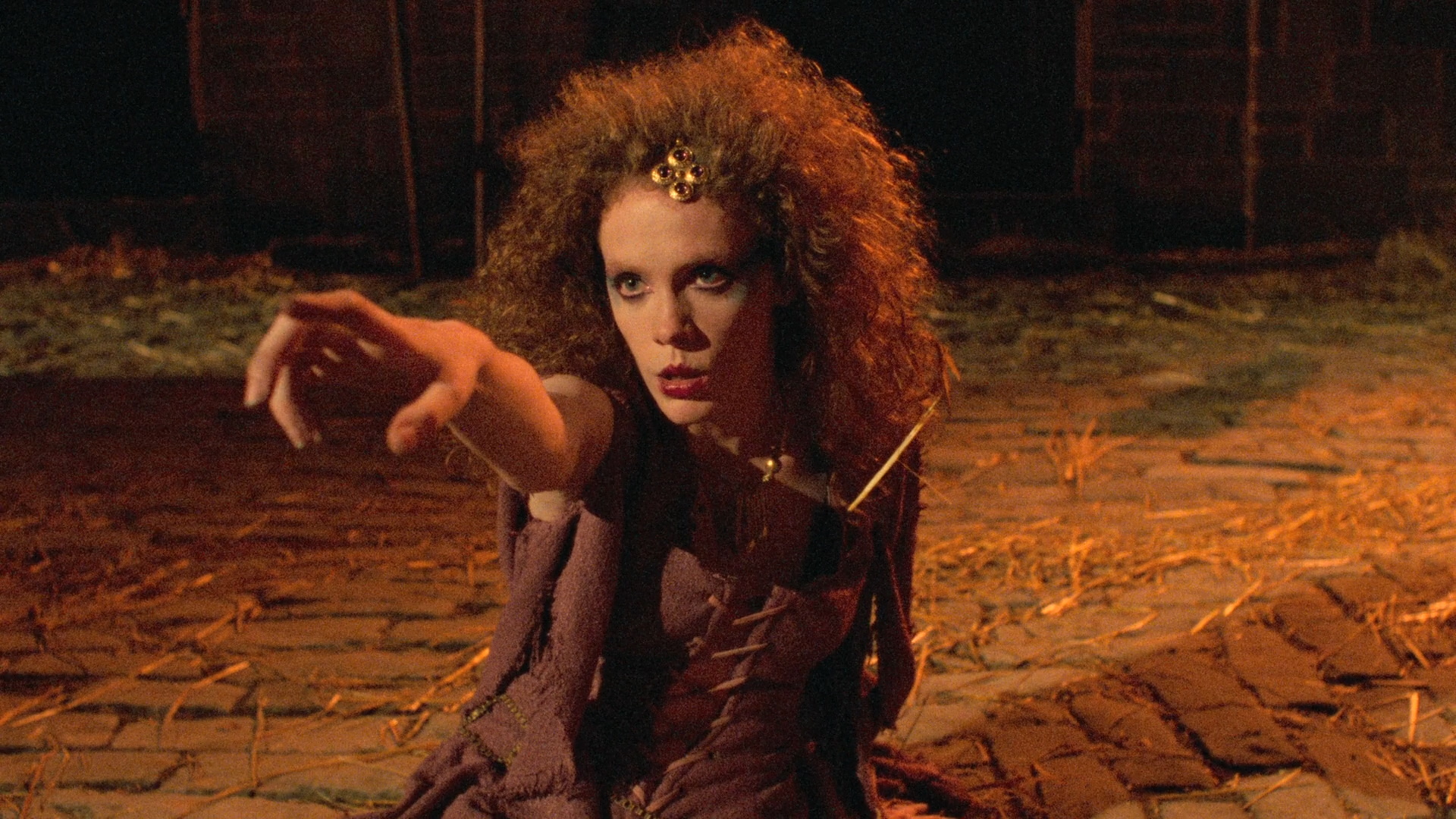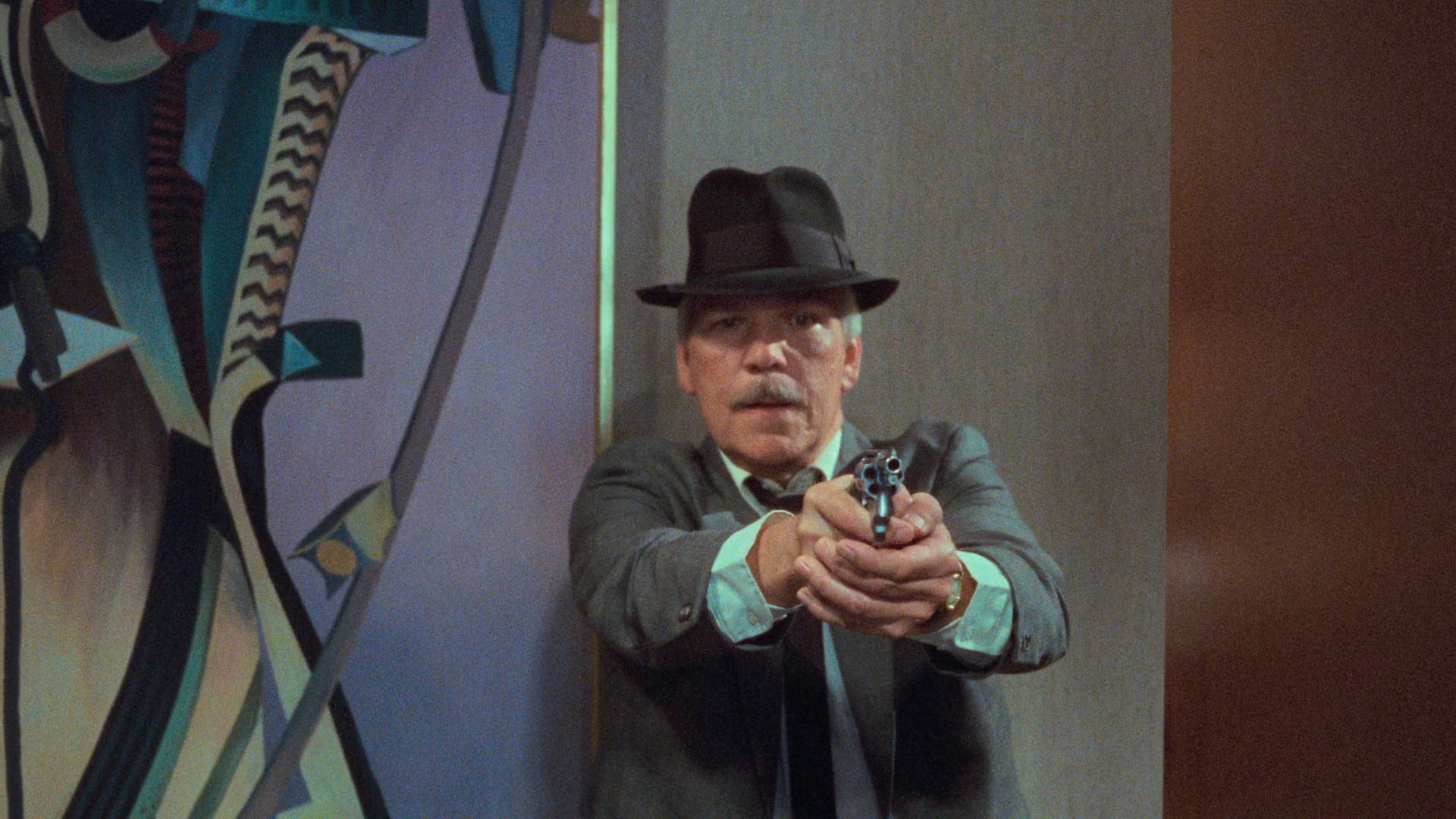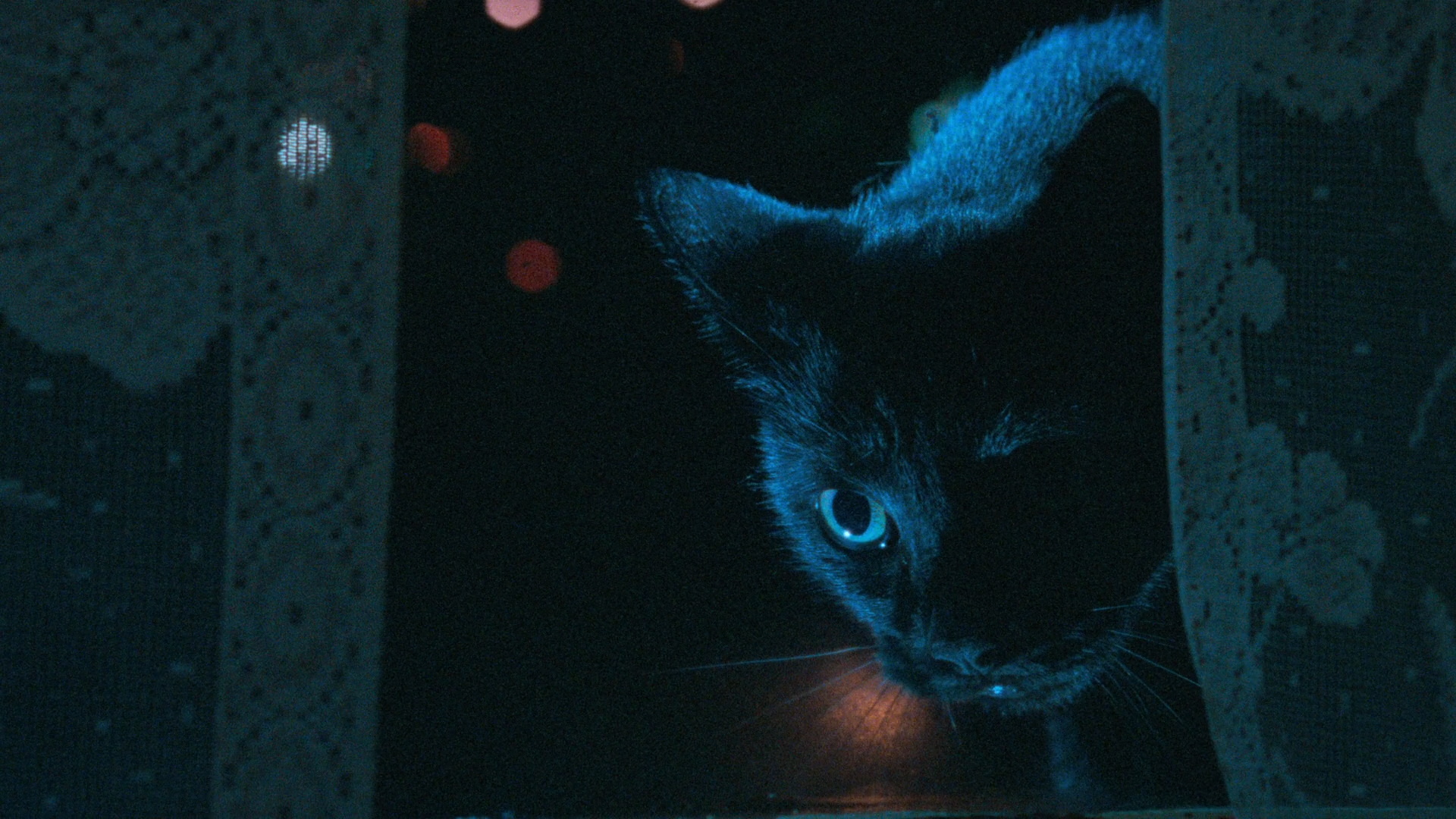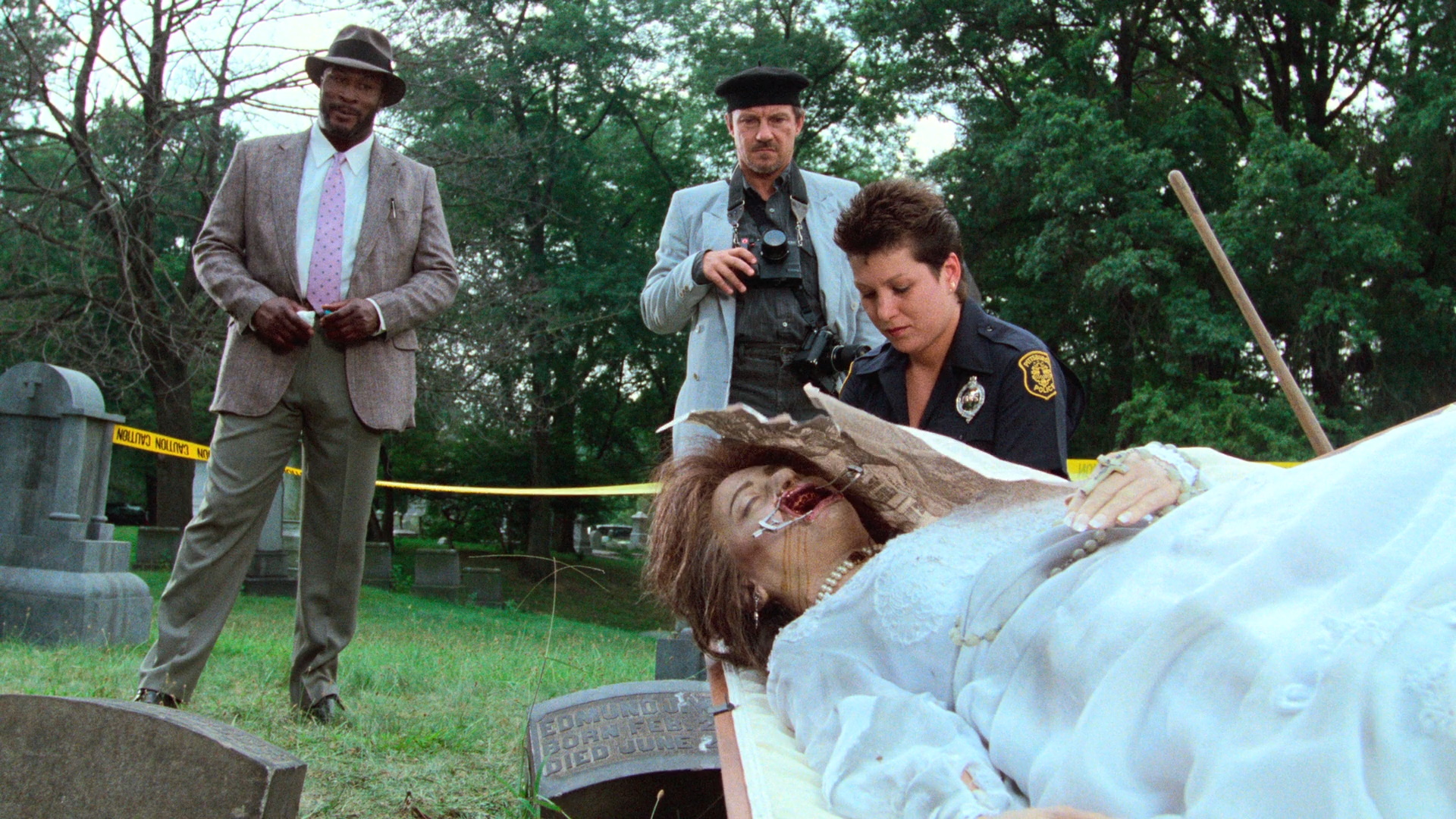| Reviews & Columns |
|
Reviews DVD TV on DVD Blu-ray 4K UHD International DVDs In Theaters Reviews by Studio Video Games Features Collector Series DVDs Easter Egg Database Interviews DVD Talk Radio Feature Articles Columns Anime Talk DVD Savant Horror DVDs The M.O.D. Squad Art House HD Talk Silent DVD
|
DVD Talk Forum |
|
|
| Resources |
|
DVD Price Search Customer Service #'s RCE Info Links |
|
Columns
|
|
|
Two Evil Eyes (2019 4K Remaster)
When Dario Argento set out to make his first film on these shores, he embraced America in most every conceivable sense. Argento once more collaborated with George A. Romero – a decade after inexorably changing the face of horror together with Dawn of the Dead – in his partner's favored stomping grounds of Pittsburgh. The crew overwhelmingly hailed from this country and the cast even moreso. Even the subject matter was unmistakably American. Not only did Argento set out to update Edgar Allen Poe's macabre tales for what was then the modern age, but he even took a small crew to Baltimore to document Poe's life and legacy. The only half-measure taken by Argento with his first American production was one in the most literal sense; half of Two Evil Eyes would be devoted to his adaptation of "The Black Cat", with the remainder of its runtime dedicated to Romero's take on "The Facts in the Case of M. Valdemar".
Two Evil Eyes is not the film that either of these genre titans had envisioned. The original germ of Argento's concept was for a television series, before shifting to a feature film anthology with the likes of Stephen King, John Carpenter, Wes Craven, and Clive Barker also tapped to contribute. George Romero developed an adaptation of "The Masque of the Red Death" set in a high-rise that would serve as an allegory for the AIDS epidemic while also exploring the social strata that had long been a fixture in his work. Dario Argento, meanwhile, was toying with the idea of transporting "The Pit and the Pendulum" to a dictatorial South American regime. In a more perfect world, that's the film I'd be reviewing: a proper anthology showcasing the talents of horror's most gifted cinematic storytellers, adapting tales about which Romero, Argento, and whoever else brought onboard would have been intensely passionate in realizing. And that's because the compromised film I'm instead left writing about is rather a disappointment.
Much as Two Evil Eyes is not quite an anthology, there's not quite a framing device, opening with a documentary-style glance at Poe's former home and grave before settling into the first of its two segments. There's the temptation to say that it's appropriate that George Romero, of all people, would adapt "The Facts in the Case of M. Valdemar". It is, after all, a story climaxing with the emergence of the walking dead, even if the scale is far more intimate and that there are no flesh-eating ghouls besides. There are echoes of Creepshow – not simply because of the sheer number of cast members returning here but because this story, like "Father's Day", revolves around a wealthy, aging man whose rapaciously greedy family is pecking at his fortune before he's even in the grave.
Ernest Valdemar (Bingo O'Malley) had ensured that his trophy wife Jessica (Adrienne Barbeau) would be taken care of in the event of his death, but she doesn't have time to wait for him to at long last keel over, let alone the many months necessary for the estate to be settled afterwards. She's long allowed herself to be used for pleasure and for show, and Jessica seethes that it's past time she gets what's coming to her. To expedite the process, Dr. Hoffman (Ramy Zada) places the ailing Valdemar in a state of hypnosis, compelling him to sign all the right documents and confirm over the phone these many suspicious, ill-advised financial transactions. Valdemar is all too aware that his wife is robbing him blind and fucking the doctor ostensibly there to care for him, but he's not in a position to do anything about it. There are enough balls in the air that Valdemar only has to survive a few short weeks to see the process through, and then Jessica will emerge free from any suspicion, at which point she, the good doctor, and several million dollars can all live together happily ever after.
"The Facts in the Case of M. Valdemar" may not have the candy-colored, cinematic verve of Creepshow, but it does share its EC Comics morality. So, at the worst possible time for their thieving scheme, Valdemar dies. Jessica and Doc Hoffman scramble to figure out how to sustain the scam, and their search leads them to the oversized freezer in the basement. It's just that Valdemar was still under the thrall of hypnosis upon his passing, so while his body may be cold and lifeless, some part of him remains – trapped between the world of the living and the realm of the dead. He's not alone, and these...these others see in Valdemar a gateway towards this mortal coil.
Fade to black. Fade into Argento's segment. At first blush, it may look as if the second half of Two Evil Eyes will indeed be an adaptation of "The Pit and the Pendulum". I mean:
That's because, not far removed from having planned an entire television series oriented around Poe adaptations, Argento peppers his take on "The Black Cat" with homages too numerous to count. At times, it feels somewhat organic, such as Tom Savini's cameo as a graverobber who'd ripped the teeth from a lost love a la "Berenice", and other times less so, like a bartender who, apropos of nothing, ends a conversation by saying, "my name's Eleanora." Anyway, Harvey Keitel careens deliriously over the top as unhinged crime photographer Rod Usher (get it?!). A black cat with a distinctive white mark has wandered into Usher's life, hopelessly charming his girlfriend Annabel (Madeleine Potter) yet stalking and clawing at the photographer at every possible turn. Usher has been working on a collection of his most disturbing photos, and how better to make a macabre impression than to photograph himself strangling his lover's pet to death?
Usher's spiral towards madness is accelerated as the cat he'd murdered somehow returns from the grave. Annabel, alas, remains dead when she winds up on the wrong end of another of Usher's violent outbursts. And though he's able leverage his intimate knowledge of murder investigations and a certain degree of friendliness with the police, Usher's crimes cannot stay hidden for long.
When Blue Underground first introduced me to Two Evil Eyes back in 2003, I greatly favored – as most viewers seem to – "The Black Cat". Argento's half of the film is far more dynamic visually, from the inventive camerawork to the more lavish production design to the far greater onslaught of gruesome makeup effects. In contrast to Romero's segment, which emphasizes atmosphere and an uneasy looming dread until all hell finally breaks loose, "The Black Cat" is more generous with action beats. As time has gone on, though, I've found my preferences shifting instead more towards "The Facts in the Case of M. Valdemar".
Pacing admittedly isn't among the chief strengths of Romero's segment; even the director himself acknowledges that it's too slow in an archival interview elsewhere in this set. It does, however, boast the anthology's most singularly compelling character in Jessica Valdemar. Her monologue about at long last being paid for services rendered is arresting, and it's all the more impressive given that Jessica isn't nearly as cold and confident as she lets on. Though Jessica speaks from a lofty position of privilege and power, that delivery has been carefully rehearsed on the drive to the bank. She's all too aware that what she's doing is beyond the pale, and she feels some degree of regret as a result. There is a gulf separating a lack of love from needless cruelty, and, for all her sins, Jessica has no compulsion to cross it.
And it's Barbeau's performance, Jessica's inner conflict, and my fascination with this morbid scheme that holds my attention, despite how sparse any overt thrills are for so much of "The Facts in the Case of M. Valdemar". In the same vein as Psycho, I find my sympathies starting to lie with the perpetrator rather than the victim. My heart skips a beat when the doorbell rings at a pivotal moment, threatening to expose Jessica as she and her lover are still reeling from the last disruption. I also appreciate that Ernest Valdemar – or what remains of him, anyway – is not some vengeful force wreaking havoc from beyond the grave. He's a zombie in the more classic sense – a puppet, unable to act on his own will. And while, yes, this segment should really clock in no longer than a half hour in length, the epilogue with Tom Atkins (Night of the Creeps) plays like kids with finger-guns pretending to be cops, and it's disappointingly light on scares or grue, the segment's strengths more than outweigh its missteps.
"The Black Cat", meanwhile, suffers more with each successive viewing, and much of that is due to Keitel's lead performance. This segment is meant to chart Usher's gradual descent into madness, but Keitel instead ensures that he's a complete fucking loon from word one. At no point does he earn a glimmer of sympathy. Whereas someone like Barbeau is better able to escape into her character, Keitel is playing for the cheap seats with his manic, wildly unnatural line delivery. The artifice of it all is so overbearing that I can't get lost in the story. The absurdity of so much of what follows is deliberate – Usher's slapdash ren faire nightmare, an indescribably bizarre performance by Sally Kirkland as a bartender, Keitel playing Weekend at Bernie's with a ridiculous looking faux-Annabel rig in their sedan, the actor fucking meowing at one point, and, even worse, Usher's shitty black beret – but loses more and more of its luster every time I watch Two Evil Eyes. Though little about "The Black Cat" has aged well to my mind, Tom Savini's grisly makeup effects are a definite exception. The revelation of a half-devoured corpse and the nigh-demonic kittens it's sustaining easily ranks among my favorite gore effects of any movie in the annals of horror.
So, yes, Two Evil Eyes would have benefitted greatly from another couple of segments or, at the very least, a heavily truncated runtime. But despite being all too aware of its flaws, here I am rewatching it anyway, and I'm sure much the same can be said for most of you reading this. We're talking about George Romero and Dario Argento together in one film, adapting the work of one of the genre's most influential and enduring writers. And while the result is hardly a crowning achievement for either filmmaker, Two Evil Eyes remains indispensable for admirers of either director's work, and it's a hell of a showcase for Tom Savini and his immeasurably talented crew of splatter artistes. Flawed, lackluster, and yet still Recommended.
Video
If I hadn't already watched Two Evil Eyes more times than I'd care to count, I could very easily have been fooled into believing this anthology is years more recent a production than it actually is. That's a testament to how truly exceptional Blue Underground's reissue of the film – remastered in 4K from the original camera negative – so often is. It's astonishing to think that the shot below, for instance, was committed to film three full decades ago:
Their initial release of Two Evil Eyes back in 2009 was afflicted by the same scanner noise issues as a number of the label's titles at the time, but such concerns are a distant memory. The analog video noise of years past makes way for a stunningly filmic sheen of grain. Its palette is now warmer and far more vivid. Note in the comparisons below how the left side of Adrienne Barbeau's face better catches the light beaming from a nearby window, or the searing neons of South of Heaven's sign behind the bar:
I can imagine some viewers perhaps bristling at the revised color timing and heightened brightness compared to the prior release, but this reissue invariably looks right to my eyes in a way the original Blu-ray disc can't match. This 4K remaster is, of course, immaculate, free of any speckling or damage throughout the film's two hour runtime. "The Black Cat" is the more visually erratic of Two Evil Eyes' pair of segments – not quite as consistently crisp, and with more pronounced spikes in grain – but they both look outstanding. I stand in awe of just how fine the detail on display so often is. And although the bitrate here is on average quite a bit lower than the original release, I'm not left with any concerns about the AVC encode at all – no mosquito noise, no blocking, and really no flaws worth speaking of whatsoever. Even those rare moments when I think I've spotted an issue, such as the lack of shadow detail throughout the near-entirety of the cat's fur in the screenshot below:
...appear to date back to the original photography rather than any misstep with the remastering or authoring of this re-release. I have consistently been impressed with all of the presentations that Blue Underground has seen to revisit with these 4K remasters, and Two Evil Eyes is another in a long line of successes.
Audio
There are a pair of 24-bit lossless soundtracks from which to choose on Two Evil Eyes, defaulting to a 7.1 remix and with the original stereo also available. I'll confess to not being nearly as much of a purist as I ought to be when it comes to audio, so I started this review with the intention of again experiencing the film in full surround sound. I also have to admit that I found it borderline-unlistenable. Not because of overbearing background noise or any sort of jarringly overt abberations, no; it's just that the dialogue is mixed unusually low. The 7.1 audio overall is delivered at a rather meek volume, really, but even after compensating, Two Evil Eyes' dialogue is overwhelmed by the score and sound effects. I mean, look at the waveforms of the 7.1 audio – downmixed to stereo for this visual comparison – compared to the stereo track:
I did my damndest to make sure that the imbalance I'm hearing wasn't specific to my setup, disabling Neural:X upconversion on my AVR in case that was negatively impacting the dialogue as well as verifying these issues on another rig. If you'd like to hear with your own ears, I've recorded the comparison below:
| 7.1 (Downmixed) | Stereo |
Despite the fact that Blue Underground's 2009 Blu-ray release also featured an eight-channel DTS-HD Master Audio soundtrack, this is not the same mix, and the initial release did not suffer from these same problems. Another comparison follows:
| 2019 | 2009 |
Thankfully, there's still the stereo audio to fall back on. Though that means that, say, the arrival of The Others amidst claps of thunder is less immersive than it would've been otherwise, this track doesn't leave me with any concerns of note. Every bit as clean and clear as I could've hoped to hear, it's a robust soundtrack, with virtually everything from Valdemar's undead moans to the diagetic strings throughout "The Black Cat" sounding marvelous. There are brief moments throughout the second segment where the dialogue doesn't sound as sterling as the rest, but that's more an issue with the recording than the DTS-HD Master Audio soundtrack itself:
| Stereo |
Two Evil Eyes also features a monaural French dub (Dolby Digital; 192kbps) alongside subtitles in English (SDH), French, and Spanish. A commentary rounds out the audio options.
Extras
This three disc limited edition of Two Evil Eyes includes the film itself on Blu-ray, a dedicated disc of extras, and an audio CD – right at eight hours of material, all told.
- Audio CD: Pino Donaggio's score – arguably the film's second greatest asset, behind only Savini's masterful effects – had never before been issued on CD, and Blue Underground ensures that this soundtrack is well worth the wait. Spanning 21 tracks and a nearly hour long runtime, the fidelity showcased here is nothing short of phenomenal.
- Audio Commentary: Those who only have the time to devote to just one of Two Evil Eyes' extras would do well to consider this commentary by Troy Howarth (Murder by Design: The Unsane Cinema of Dario Argento). Many of the highlights throughout this sprawling special edition are discussed here, particularly the genesis of the project, discarded concepts, and potential collaborators who ultimately backed out. There's also quite a bit of information unique to this track, such as this being the only film where Romero was credited without his middle initial, the struggle of established masters of horror as the calendar prepared to flip over to the 1990s, the revelation that it was contractually forbidden for Harvey Keitel's fake head to be on the set the same time as the actor himself, and the sheer volume of Academy Award nominees in Argento's segment. As ever, Howarth delights in context (especially this tumultuous period for Romero as a filmmaker) and the careers of most everyone on either side of the camera, and there's also extensive conversation about the film's spotty release and failure at the box office.
- Theatrical Trailer (1 min.; HD): Two Evil Eyes will blow your peace of mind to pieces! So says this minute and a half long trailer, anyway.
- Poster and Still Gallery (HD): More than a hundred images in all are featured throughout this massive collection, divided among posters, advertising materials, lobby cards, production stills, home video releases, and original artwork by Enzo Sciotti. It's always a treat to see how a film was marketed the world over, and more impressive still is a look at Sciotti's stunning artwork taking shape.
- Two Masters' Eyes (30 min.; SD): Two Evil Eyes' dedicated disc of extras leads off with this interview with Dario Argento and the since-departed George Romero, carried over from Blue Underground's earlier home video releases. Argento is very much the driving force, delving into how much of an influence Poe had on his life and career, his more ambitious intentions for the film that ultimately fell by the wayside, and how some of the more daring camerawork was accomplished, among a great many other topics. Romero, meanwhile, notes that he avidly read Poe but wouldn't consider him much of an influence, delves into a number of his expectations for the project that wound up going unfulfilled, and chats about casting so many Creepshow alums. There are also brief comments by a young Asia Argento on the set, Tom Savini, and Claudio Argento. Whether it's revelations about Argento's love of buffalo wings, Savini conversing with Argento in Italian, or the ASPCA's dead certainty that black cats were being slaughtered on the set, "Two Masters' Eyes" is among the most essential of this collection's many extras.
- Savini's EFX (12 min.; SD): Tom Savini notes in "Two Masters' Eyes" that one of the chief thrills of this project was figuring out how to pull off gags that had never been done before. That's explored at greater length here, from blowing out a freezer-burned cadaver's brains to recycling a dead stripper for a half-eaten corpse. I'd normally just rattle off a few highlights, but really, this entire interview – complete with vintage behind-the-scenes footage and effects tests – is one gigantic highlight.
- At Home with Tom Savini (16 min.; SD): This thirty year old tour through Savini's home was shot during the final days of filming "The Facts in the Case of M. Valdemar". Following a chat on the car ride over and a peek at the gargoyle on the gate, we get to see Savini's extensive collection of...errr, collections, among them swords, figurines, movies, and books. He shows off many of his creations – for work and for fun – as well as speaking a bit about his then-impending remake of Night of the Living Dead.
- Adrienne Barbeau on George Romero (5 min.; SD): Adrienne Barbeau was interviewed about George Romero on the set of Two Evil Eyes for Document of the Dead, although this footage ultimately didn't make it into that documentary. Barbeau speaks briefly about how Romero already has the entire movie edited in his head when he's on the set, the trust she has in him as a filmmaker, how different a performance is demanded here than her turn in Creepshow, and revealing which of Romero's films is her favorite.
- Before I Wake (14 min.; HD): This newly-produced interview with Ramy Zada touches on filming in Pittsburgh, what it was like to work alongside George Romero and Adrienne Barbeau, and being on the less pleasant end of all the gruesome effects work closing out his half of the movie.
- Behind the Wall (16 min.; HD): Among my favorite of Two Evil Eyes' new extras is this conversation with Madeleine Potter. The actress speaks about her longstanding fascination with Poe's work, Argento giving her money to shop for Annabel's wardrobe herself, that her violin playing didn't sound remotely as lovely as it'd appear to be on-screen, and her brother Paul appearing in every shot of Usher's nightmare, along with quite a few other topics. Her experiences with Argento and Keitel – on the set and after seeing most of the completed film – are similarly intriguing.
- One Maestro and Two Masters (15 min.; mostly SD): Composer Pino Donaggio touches on the fusion of Goblin and Morricone that he brings to his collaborations with Argento, understandably evoking Psycho in a sequence with Martin Balsam, and the profoundly different approaches he took with the music in each half of Two Evil Eyes.
- Rewriting Poe (14 min.; HD): Longtime Argento collaborator Franco Ferrini speaks about incorporating elements of so many of Poe's tales into the screenplay for "The Black Cat", revealing that Keitel's crime photographer was inspired by the all-too-real Arthur Fellig, and noting that the ren faire nightmare is an homage to another 19th century writer of great renown. Ferrini also delves into Usher's descent into madness, why he feels that Argento's is by far the superior of the two segments, and lists some of Poe's stories intended to have been adapted for Argento's never-produced anthology television series.
- The Cat Who Wouldn't Die (27 min.; HD): This interview with assistant director Luigi Cozzi (Contamination) is easily my favorite of the newly-produced extras. There are so many amazing comments here that I'm not particularly sure where to start: why Argento brought in Italian collaborators to supplement roles already filled by the American crew, what distinguishes film crews on these shores from the largely disinterested ones back in Italy, the friendly creative competition between Romero and Argento, and the filming of several of "The Black Cat"'s standout moments. From his convention booth, he also shows off a couple of Two Evil Eyes' most memorable props.
- Two Evil Brothers (14 min.; HD): Special effects makeup supervisor Everett Burrell has a wealth of stories to tell. He delves into virtually all of the most memorable splatter gags, from doing a lifecast of a stripper to dropping a metronome into a fake chest to the mechanics of Savini's face squibs to, uh, getting the cops called on him when developing behind-the-scenes shots at a One Hour Photo joint. Burrell also shares his memories of Savini and his late brother-in-arms at Optic Nerve Studios, John Vulich. And hey, maybe you're used to hearing stories about cars being driven into a river in these sorts of featurettes, but it's not some behind-the-scenes stunt deal here. Hopefully that's tantalizing 'cause you're doing yourself a disservice if you skip past this interview.
- Working with George (9 min.; HD): The last of the on-disc extras is a conversation with costume designer Barbara Anderson, who, with her late husband Cletus, were longtime collaborators with Romero. In no way does she limit the scope of this interview to Two Evil Eyes, discussing her experiences on Knightriders, Creepshow, Day of the Dead, and The Dark Half. As for this film in particular, Anderson touches on how spur of the moment decisions sometimes were and, echoing what many others have said, that Harvey Keitel wasn't altogether pleasant to work with.
As with Blue Underground's other 4K remasters, Two Evil Eyes arrives with a lenticular animated slipcover. Both sides of the reversible interior cover feature artwork by the legendary Enzo Sciotti. Much of the enclosed booklet is devoted to Michael Gingold's "The Facts in the Case of Two Evil Eyes". Gingold charts the history of Poe adaptations to film, offers greater detail about Romero's intentions for "The Masque of the Red Death" than any of the on-disc extras, and lists Poe homages that were ultimately removed from "The Black Cat", among quite a number of other highlights. The booklet also includes a list of chapter stops for the film proper as well as the tracks on the accompanying audio CD.
The Final Word
I'd imagine that most genre fanatics reading this would acknowledge that Two Evil Eyes is a deeply flawed film, and yet it's one we keep returning to just the same. I cannot resist the siren song of several of horror's most towering talents side-by-side, adapting and reinterpreting the work of Edgar Allen Poe. (And, yes, I say "several" because Tom Savini is as integral to this conversation as George Romero and Dario Argento.) And although a special edition this lavish and far from cheap is perhaps a tough sell to those who haven't yet experienced the film, Blue Underground has delivered an exceptional package for those of us who are well-acquainted. As high as my expectations were going in, this 4K remaster readily eclipsed them, there are hours upon hours of compelling extras worth exploring, and to at long last have Pino Donaggio's outstanding soundtrack on CD alone is arguably worth the price of entry. Its only imperfection is an imbalanced 7.1 soundtrack that, frankly, I shouldn't be listening to anyway when the original stereo audio is available. The uninitiated may want to consider streaming the film before shelling out anywhere from $32 to $50 for this reissue – know what you're getting into first – but otherwise...? Blue Underground has delivered a more than worthy upgrade to a film that's important to me even if I don't like it, exactly. If you have the same curious relationship with Two Evil Eyes that I do, this remaster very much comes Recommended.
|
| Popular Reviews |
| Sponsored Links |
|
|
| Sponsored Links |
|
|
| Release List | Reviews | Shop | Newsletter | Forum | DVD Giveaways | Blu-Ray | Advertise |
|
Copyright 2024 DVDTalk.com All Rights Reserved. Legal Info, Privacy Policy, Terms of Use,
Manage Preferences,
Your Privacy Choices | |||||||









